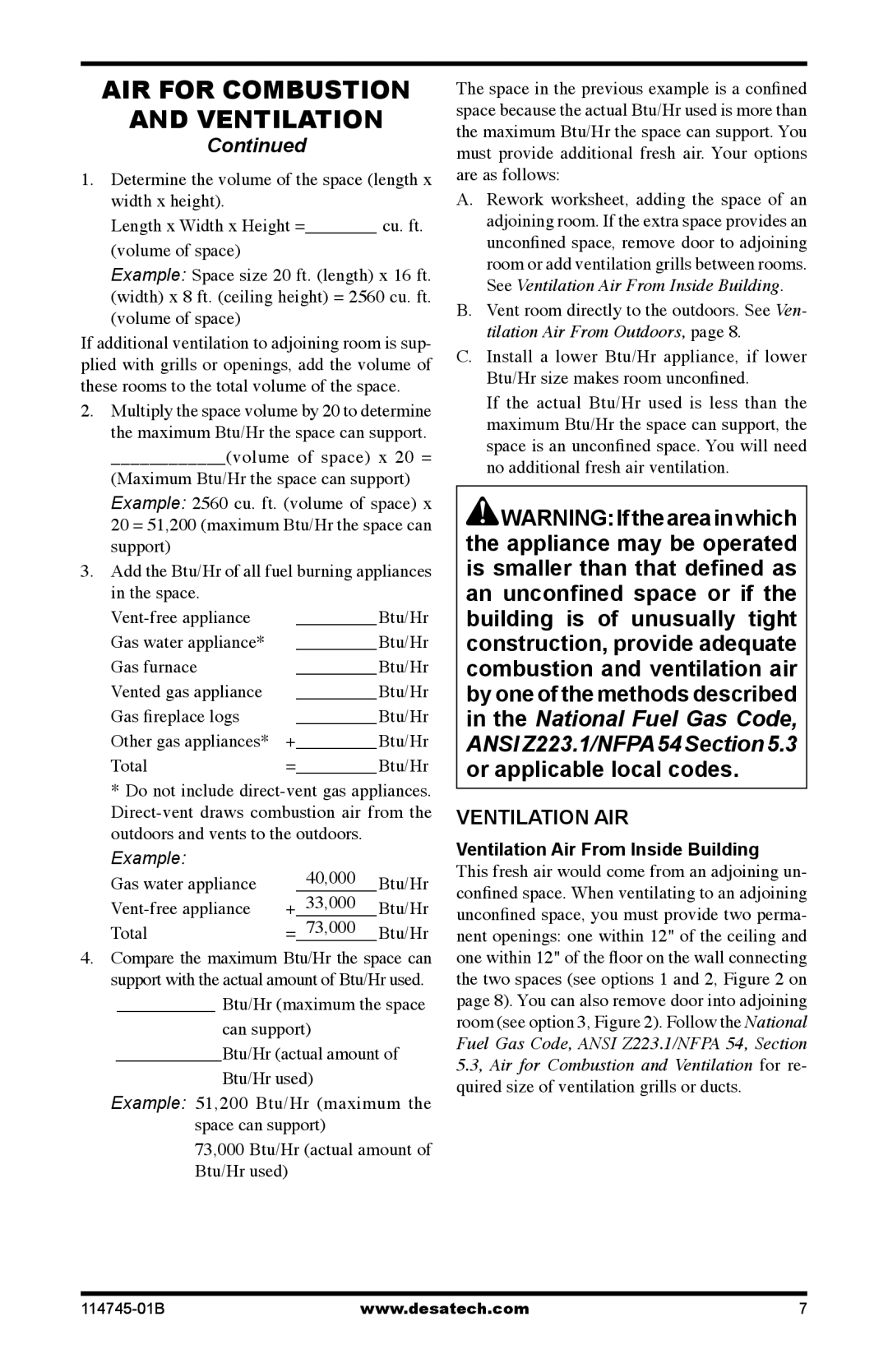VFRMV24PA, VFRMV18PA, VFRMV18NA, VFRMV24NA, VFRMV24PA specifications
Desa's VFRMV series is a line of advanced heating solutions designed for energy efficiency and optimal comfort. The series includes models VFRMV24PA, VFRMV18PA, VFRMV18NA, VFRMV24NA, and VFRMV24PA. Each model is tailored to meet different heating demands, making them suitable for various residential and commercial applications.One of the defining features of the VFRMV series is its inverter technology, which adjusts the compressor speed to match the heating or cooling needs of the environment. This capability not only enhances energy efficiency but also contributes to a quieter operation. Users can expect significant energy savings, as the inverter technology minimizes energy consumption during periods of low demand.
Each model in the VFRMV series boasts high-performance SEER and HSPF ratings, indicating superior energy efficiency and performance. With such ratings, these units are designed to make substantial contributions to reducing heating and cooling costs while complying with modern environmental standards.
The VFRMV24PA and VFRMV24NA models are particularly effective in larger spaces, offering robust heating capacities while remaining energy efficient. On the other hand, the VFRMV18PA and VFRMV18NA models cater to medium-sized spaces, ensuring that homes or offices maintain a comfortable atmosphere without overspending on energy bills.
Additional characteristics include advanced filtration systems that improve indoor air quality by removing dust, allergens, and pollutants. This feature is particularly beneficial for allergy sufferers or anyone keen on maintaining a healthier living environment.
Moreover, the VFRMV series incorporates smart home compatibility, allowing users to control their heating and cooling systems remotely via smartphone apps. This feature not only adds convenience but also enables better energy management, as users can adjust settings based on their schedules or occupancy patterns.
In summary, Desa's VFRMV series, comprising models VFRMV24PA, VFRMV18PA, VFRMV18NA, VFRMV24NA, and VFRMV24PA, offers a blend of efficiency, performance, and advanced technology. The use of inverter technology, high SEER and HSPF ratings, robust heating capabilities, advanced filtration, and smart home features make these units ideal choices for anyone looking to enhance comfort while minimizing energy expenses.

